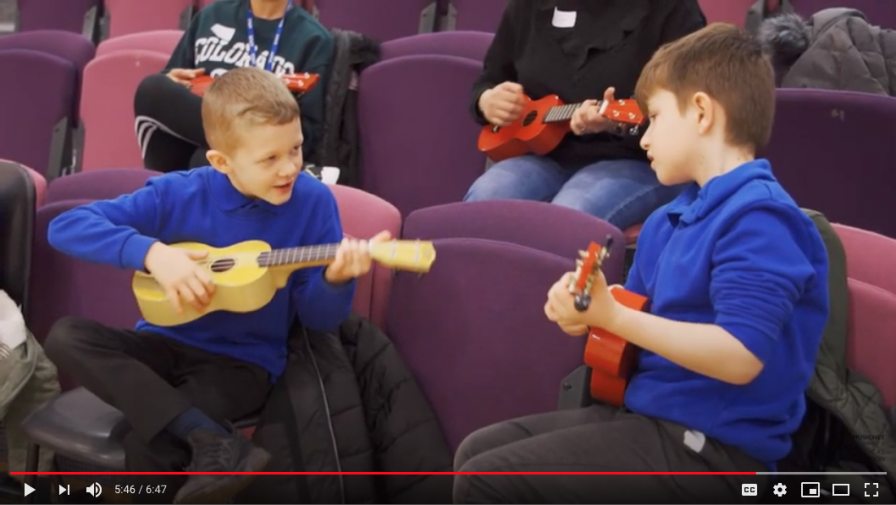How to set up in in-school creative trauma-informed musical nurture group

In partnership with a network of school heads, Stevenage Music Centre has been piloting a programme of research into how instrumental tuition might prevent school exclusions. Here, Michael Davidson, Head of Rock, Family and Community Music at Hertfordshire Music Service summarises the process for setting up a Music Nurture Group for vulnerable pupils.
Intended Outcomes: Improved emotional resilience, confidence, musical and social skills, independent learning, musical community.
Sources of evidence: Triangulated (pupil, tutor, teacher/SENCo/TA) music lesson report forms (download a sample music lesson report form here) case studies, lesson observations.
Step-by-step process
- Identify schools with a high number of pupils at risk of exclusion, in partnership with local authority inclusion teams and local music centre.
- Music service and school SENCO Identify young people at risk of exclusion from primary school, who are interested to learn music in a small group.
- They then select group of 3-5 with a close age range and compatible characters/challenges.
- Music service sends pupil research consent form to parents/carers. Ensure this is signed, returned and kept safely.
- Ensure suitable accommodation is available in school for the sessions (quiet and enclosed), advise possible times for session, and available instruments, agree timetable.
- Discuss pupil individual challenges with SENCO, share and log.
- Identify suitable tutors for each pupil – either already working in school, or locally. Arrange individual briefing sessions to advise each tutor on what works best for each, to help tutor adapt their practice as necessary.
- Identify and arrange appropriate training for tutors: this may include attachment theory, early trauma, Adverse Childhood Experiences training, mental health awareness, and community music training.
- Discuss with tutors which additional outcomes/indicators (social, personal) would be valued by school, in order for them to continue to support and fund the programme.
- HMS tutor delivers sessions, with support from Teaching Assistants, keeping notes of outcomes and changed behaviours, with input from Teaching Assistants/SENCOs. At a sample of sessions the tutor, TA or SENCO asks each individual pupil a series of short questions outlined on the music lesson report form, including ‘how does it feel to make music’ and records this on the music lesson report form.
- School provides demographic information on pupils for reporting/analysis.
- Tutor completes music lesson report form for each pupil, with input from SENCO, Pupil and Pupil’s parents (ie triangulated). Tutor writes up one case study, either individual or group. A music service manager completes one lesson observation during the programme and writes up.
- Share project outcomes with SENCOs/school Heads and local authority (Hertfordshire County Council) inclusion leads.
Other things we’ve found helpful
Framing the session as a musical activity rather than as an intervention to improve behaviour/ wellbeing.
Working towards simple recordings or performance, although the process is more important than the final product.
Asking pupils to be ‘co-researchers’ and asking for their input into the evaluation via the music lesson report forms eg ‘how does it feel to learn music?’
Making it easy for pupils to progress to an activity at the music centre. For example, we ran a Nurture Group Day at one of our music centres, and are planning to invite families to a performance there.
Find more resources from the Changing Tracks programme on the Hertfordshire Music Service website.

